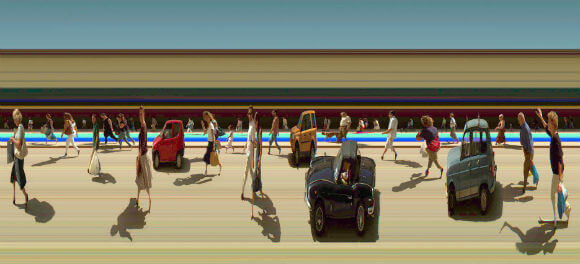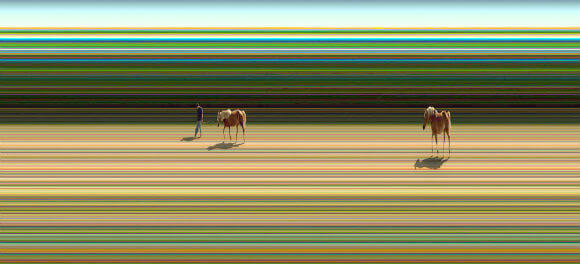planb (A collaboration between artists, Sophia New and Daniel Belasco Rogers) is engaged in performance work, durational work, participatory projects, locative media and audio projects and have exhibited pieces in galleries across Europe.
GPS track through Berlin and countryside. (source: planb)
Zoomed in on GPS track through Berlin. (source: planb)
GPS track through Berlin. (source: planb)
“Our work is site-specific and relationship-specific. Two faces of the same coin. We either explore the nuances of our own relationship or our relationship to a location or both - a kind of looking inward and outward at the same time.” -planb
I took their work as my case study and will present one of their projects here, as well as images from another.
The project Monday Walks, took place from June 24th to the 27th, 2010 in Leipzig and was "inspired by the demonstrations that took place in Leipzig leading up to the fall of the Berlin Wall in 1989 and beyond, the so-called Montagsdemonstrationen (Monday Demonstrations).” -planb
The Monday Walks consisted of two parts:
1.) “a GPS animation of recreations of the journeys people took to the demonstrations in 1989. Students from the University of Leipzig interviewed people from Leipzig who had taken part in the demonstrations, and then the students reconstructed their journeys, following the specific path taken by the demonstrators. These reconstructions were recorded on GPS’s, and the journeys were then visualized”
2.) “a walk re-tracing part of the Monday Demonstrations, finishing where many of the demonstrations ended, at the Stasi headquarters, the Runde Ecke. The walk was developed in collaboration with the students and it featured original sound material from the actual time, interviews with Leipzigers who took part in the demonstrations, and some live interventions into the space and social fabric of the city”
Students were asked to interview a Leipziger who had taken part in the Monday Demonstrations in 1989, in order to reconstruct the route they took to the protest. Their responses are documented were document a blog for any interested persons to reference:
I have taken the route of Niels Adam. Now 39, lives in Jena and operates a cinema...Many things he remembered no more, and only came with telling details, such as how he has mastered the way home without a tram.
-Posted by tim at 02/06/2010 11:29:00 PM and translated from German.
The combination of collecting anecdotal qualitative evidence, a physical re-walking of a historical reconstructed route, and the recording of these re-walkings with GPS provides a very compelling method for documenting the path which historical events took through space, “uncovering realities previously unseen or unimagined, even across seemingly exhausted grounds” (James Corner. Agency of Mapping)



































